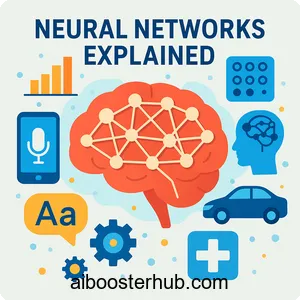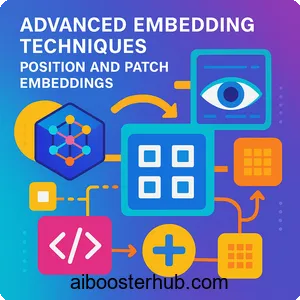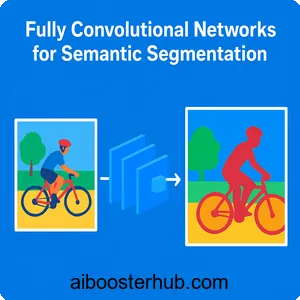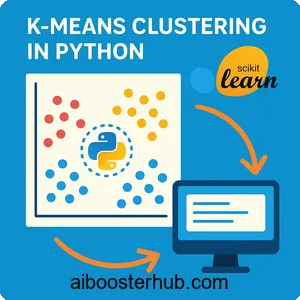Spiking Neural Networks: The Next Generation of AI
The quest to replicate the remarkable efficiency and capabilities of the human brain has led researchers to explore computational models that more closely mirror biological neural circuits. While conventional artificial neural networks have achieved remarkable success in pattern recognition and decision-making tasks, they differ fundamentally from how biological neurons communicate. Enter spiking neural networks (SNNs)—a brain-inspired computing paradigm that promises to revolutionize artificial intelligence by incorporating the temporal dynamics of real neurons.
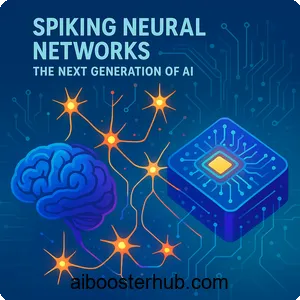
Unlike traditional neural networks that process information using continuous values, spiking neural networks communicate through discrete events called spikes, much like neurons in the brain. This temporal coding approach enables SNNs to process information more efficiently and naturally handle time-dependent data. As we stand at the threshold of neuromorphic computing, understanding SNNs becomes crucial for anyone interested in the future of AI.
Content
Toggle1. Understanding the fundamentals of spiking neural networks
What makes SNNs different from traditional neural networks
Traditional artificial neural networks operate by passing continuous-valued activations between layers of neurons. Each neuron computes a weighted sum of its inputs, applies an activation function, and propagates the result forward. This approach, while powerful, bears little resemblance to biological neural processing.
Spiking neural networks, by contrast, model neurons that communicate using brief electrical pulses called spikes or action potentials. These spikes occur only when a neuron’s membrane potential exceeds a certain threshold, making SNNs event-driven rather than continuously active. This fundamental difference has profound implications for both computational efficiency and information representation.
The key distinction lies in how information is encoded. While conventional neural networks encode information in the magnitude of activations, SNNs can encode information in multiple ways: the timing of individual spikes (temporal coding), the rate of spike firing (rate coding), or the relative timing between different neurons (population coding). This rich temporal structure allows SNNs to naturally process time-series data and implement sophisticated neural computation strategies.
The biological inspiration behind SNNs
The human brain contains approximately 86 billion neurons, each connected to thousands of others through synapses. These biological neurons don’t fire continuously; instead, they emit brief electrical pulses lasting about 1-2 milliseconds when their membrane potential crosses a threshold. Between spikes, neurons remain relatively quiescent, consuming minimal energy.
This sparse, event-driven communication enables the brain to process vast amounts of information while consuming only about 20 watts of power—roughly equivalent to a dim light bulb. In contrast, modern deep learning systems can require thousands of watts to perform tasks that the brain handles effortlessly.
SNNs attempt to capture this efficiency by modeling the dynamics of biological neurons. The most commonly used model is the Leaky Integrate-and-Fire (LIF) neuron, which describes how a neuron’s membrane potential evolves over time:
$$\tau_m \frac{dV}{dt} = -(V – V_{rest}) + RI(t)$$
Where \(V\) is the membrane potential, \(\tau_m\) is the membrane time constant, \(V_{rest}\) is the resting potential, \(R\) is the membrane resistance, and \(I(t)\) is the input current. When \(V\) reaches a threshold \(V_{th}\), the neuron fires a spike and \(V\) resets to \(V_{reset}\).
Neural circuits and temporal dynamics
One of the most fascinating aspects of SNNs is their ability to implement complex neural circuits that leverage temporal dynamics. Unlike feedforward networks that process information in discrete steps, spiking neural networks operate in continuous time, allowing for intricate temporal patterns and rhythms.
Consider a simple example: detecting coincidence. Two neurons might each fire at different times, but a downstream neuron configured with appropriate time constants can detect when both inputs arrive within a narrow temporal window. This coincidence detection is fundamental to many brain functions, from sound localization to associative learning.
The temporal dynamics also enable SNNs to exhibit phenomena like resonance, oscillations, and synchronization—behaviors observed in biological neural circuits that contribute to information processing, attention, and memory consolidation.
2. The mathematics and models of neural computation
Leaky integrate-and-fire neurons
The LIF model provides a computationally tractable approximation of neural dynamics while capturing essential features of biological neurons. Let’s implement a simple LIF neuron in Python to understand its behavior:
import numpy as np
import matplotlib.pyplot as plt
class LIFNeuron:
def __init__(self, tau_m=10.0, V_rest=-70.0, V_th=-55.0, V_reset=-75.0, R=10.0):
"""
Leaky Integrate-and-Fire neuron model
Parameters:
- tau_m: Membrane time constant (ms)
- V_rest: Resting potential (mV)
- V_th: Threshold potential (mV)
- V_reset: Reset potential after spike (mV)
- R: Membrane resistance (MΩ)
"""
self.tau_m = tau_m
self.V_rest = V_rest
self.V_th = V_th
self.V_reset = V_reset
self.R = R
self.V = V_rest
self.spike_times = []
def step(self, I, dt=0.1):
"""Simulate one time step"""
# Update membrane potential using Euler method
dV = (-(self.V - self.V_rest) + self.R * I) / self.tau_m
self.V += dV * dt
# Check for spike
if self.V >= self.V_th:
self.V = self.V_reset
return True
return False
# Simulate neuron response to constant input
neuron = LIFNeuron()
dt = 0.1
t_max = 100
time = np.arange(0, t_max, dt)
I_input = 2.0 # Input current
voltage = []
spikes = []
for t in time:
fired = neuron.step(I_input, dt)
voltage.append(neuron.V)
spikes.append(fired)
# Plot results
plt.figure(figsize=(12, 4))
plt.plot(time, voltage, 'b-', linewidth=1.5)
plt.axhline(y=-55, color='r', linestyle='--', label='Threshold')
plt.xlabel('Time (ms)')
plt.ylabel('Membrane Potential (mV)')
plt.title('LIF Neuron Response to Constant Input')
plt.legend()
plt.grid(True, alpha=0.3)
plt.tight_layout()
This code demonstrates how a LIF neuron integrates incoming current and fires spikes periodically when the threshold is exceeded. The leaky term causes the membrane potential to decay back toward rest between inputs, implementing a form of temporal memory.
Spike-timing-dependent plasticity
Learning in SNNs typically employs spike-timing-dependent plasticity (STDP), a biologically inspired learning rule where synaptic strength changes based on the relative timing of pre- and post-synaptic spikes. The basic principle is elegant: if a presynaptic neuron fires shortly before a postsynaptic neuron, their connection strengthens (Long-Term Potentiation). If the order reverses, the connection weakens (Long-Term Depression).
Mathematically, the synaptic weight change can be expressed as:
$$\Delta w = \begin{cases} A_+ e^{-\Delta t/\tau_+} & \text{if } \Delta t > 0 \ -A_- e^{\Delta t/\tau_-} & \text{if } \Delta t < 0 \end{cases}$$
Where \(\Delta t = t_{post} – t_{pre}\) is the time difference between post- and presynaptic spikes, and \(A_+\), \(A_-\), \(\tau_+\), \(\tau_-\) are learning parameters.
Here’s a Python implementation of STDP:
class STDPSynapse:
def __init__(self, weight=0.5, A_plus=0.01, A_minus=0.01,
tau_plus=20.0, tau_minus=20.0, w_min=0.0, w_max=1.0):
"""
Spike-Timing-Dependent Plasticity synapse
Parameters:
- weight: Initial synaptic weight
- A_plus, A_minus: Learning rate parameters
- tau_plus, tau_minus: Time constants (ms)
- w_min, w_max: Weight bounds
"""
self.weight = weight
self.A_plus = A_plus
self.A_minus = A_minus
self.tau_plus = tau_plus
self.tau_minus = tau_minus
self.w_min = w_min
self.w_max = w_max
self.last_pre_spike = -np.inf
self.last_post_spike = -np.inf
def update(self, t, pre_spike=False, post_spike=False):
"""Update weight based on spike timing"""
if pre_spike:
# Check if post-neuron fired recently (LTD)
if self.last_post_spike > -np.inf:
delta_t = t - self.last_post_spike
delta_w = -self.A_minus * np.exp(delta_t / self.tau_minus)
self.weight = np.clip(self.weight + delta_w, self.w_min, self.w_max)
self.last_pre_spike = t
if post_spike:
# Check if pre-neuron fired recently (LTP)
if self.last_pre_spike > -np.inf:
delta_t = t - self.last_pre_spike
delta_w = self.A_plus * np.exp(-delta_t / self.tau_plus)
self.weight = np.clip(self.weight + delta_w, self.w_min, self.w_max)
self.last_post_spike = t
return self.weight
STDP enables SNNs to learn temporal patterns and correlations in their inputs without requiring backpropagation, making them suitable for online, unsupervised learning scenarios.
Encoding information in spike trains
A critical challenge in working with spiking neural networks is encoding continuous-valued inputs into spike trains. Several encoding schemes exist, each with advantages for different applications:
Rate Coding: The most straightforward approach, where information is encoded in the firing rate—the number of spikes per unit time. Higher input values produce higher firing rates. While simple, this method can be slow since it requires observing multiple spikes to decode the information.
Temporal Coding: Information is encoded in the precise timing of spikes. For example, stronger stimuli might cause earlier spikes (time-to-first-spike coding) or specific temporal patterns. This approach can transmit information rapidly with few spikes.
Population Coding: Multiple neurons with different tuning properties collectively represent information. Each neuron responds preferentially to certain input values, and the population activity pattern encodes the full information.
Here’s a Python implementation of different encoding schemes:
def rate_encoding(value, duration, max_rate=100, dt=1.0):
"""Encode value as spike rate"""
rate = value * max_rate # Spikes per second
num_steps = int(duration / dt)
spike_train = np.random.rand(num_steps) < (rate * dt / 1000)
return spike_train
def temporal_encoding(value, duration, dt=1.0):
"""Encode value as time-to-first-spike"""
spike_time = (1 - value) * duration # Earlier spike = higher value
num_steps = int(duration / dt)
spike_train = np.zeros(num_steps, dtype=bool)
spike_idx = int(spike_time / dt)
if 0 <= spike_idx < num_steps:
spike_train[spike_idx] = True
return spike_train
def population_encoding(value, num_neurons=10, width=0.2):
"""Encode value using population of neurons with Gaussian tuning"""
preferred_values = np.linspace(0, 1, num_neurons)
responses = np.exp(-((value - preferred_values) ** 2) / (2 * width ** 2))
return responses
# Example usage
value = 0.7
duration = 100 # ms
rate_spikes = rate_encoding(value, duration)
temporal_spikes = temporal_encoding(value, duration)
population_response = population_encoding(value)
print(f"Rate coding: {np.sum(rate_spikes)} spikes")
print(f"Temporal coding: spike at t={np.argmax(temporal_spikes)} ms")
print(f"Population coding: {population_response}")
3. Neuromorphic computing and hardware implementations
The promise of energy-efficient neural processing
One of the most compelling advantages of spiking neural networks lies in their potential for dramatic energy savings. Traditional neural networks perform dense matrix multiplications, where every connection is activated during every computation cycle. This leads to enormous energy consumption, particularly as networks scale to billions of parameters.
SNNs, by contrast, communicate through sparse events. In a typical biological network, neurons fire only 0.1-1% of the time, meaning 99% of the network remains silent at any given moment. When implemented on appropriate hardware, this sparsity translates directly to energy savings—computation occurs only when spikes are present.
Neuromorphic computing refers to hardware specifically designed to exploit this sparse, event-driven nature. Instead of clocked, synchronous computation, neuromorphic chips process spikes asynchronously as they occur. This eliminates the energy wasted on clock distribution and unnecessary computations on zero-valued inputs.
For example, Intel’s Loihi neuromorphic chip can process certain workloads using 100 times less energy than conventional processors. This efficiency makes SNNs particularly attractive for edge devices, robotics, and applications where power consumption is critical.
Neuromorphic hardware platforms
Several neuromorphic hardware platforms have emerged, each with unique architectural features:
IBM TrueNorth: Contains 1 million neurons and 256 million synapses, organized into 4,096 cores. Each core operates independently, implementing LIF neurons and configurable synaptic connections. TrueNorth consumes only 70 milliwatts at typical workloads—roughly 10,000 times more efficient than conventional processors for certain neural network applications.
Intel Loihi: Features 128 neuromorphic cores with 130,000 neurons and 130 million synapses. Loihi supports on-chip learning through STDP and other plasticity rules, enabling adaptive behavior. Its asynchronous architecture allows extremely fine-grained power management.
SpiNNaker: Takes a different approach, using conventional ARM processors configured to simulate large-scale SNNs efficiently. The largest SpiNNaker machine can simulate up to 1 billion neurons in biological real-time, making it valuable for computational neuroscience research.
BrainScaleS: Operates at 10,000 times biological real-time, using analog circuits to implement neuron dynamics. This acceleration enables rapid exploration of network parameters and learning rules.
These platforms demonstrate that neuromorphic computing is transitioning from research concept to practical reality, opening new possibilities for brain-inspired AI.
Challenges in programming neuromorphic systems
Despite their promise, programming neuromorphic systems presents unique challenges. Traditional deep learning frameworks like TensorFlow and PyTorch assume synchronous, layer-by-layer computation with continuous values. SNNs require fundamentally different programming models that account for temporal dynamics and sparse events.
Several frameworks have emerged to address this gap:
- Brian2: A flexible Python simulator for SNNs with intuitive equation-based neuron definitions
- NEST: Optimized for large-scale neural simulations with biological detail
- BindsNET: Bridges SNNs and deep learning, enabling conversion of trained ANNs to SNNs
- Nengo: Provides high-level abstractions for building cognitive models with SNNs
- Norse: Integrates SNNs with PyTorch for gradient-based learning
Despite these tools, SNN development remains more complex than traditional deep learning, requiring careful consideration of temporal dynamics, encoding schemes, and hardware constraints.
4. Applications and advantages of SNNs
Real-time sensory processing
Spiking neural networks excel at processing temporal sensory data, particularly from event-based sensors that naturally produce spike-like outputs. Dynamic Vision Sensors (DVS), for example, generate events only when individual pixels detect brightness changes, rather than capturing full frames at fixed intervals.
This event-driven approach aligns perfectly with SNNs. Consider a DVS camera monitoring for motion—in a static scene, it produces no events, consuming minimal power. When motion occurs, it generates sparse events precisely where and when changes happen. An SNN can process these events directly, detecting patterns and responding to stimuli with millisecond latency.
Applications include:
Autonomous vehicles: Processing visual data with minimal latency for rapid obstacle detection and avoidance Robotics: Implementing reflexive behaviors and sensor fusion for real-time control Surveillance: Monitoring for anomalous events while ignoring static backgrounds Gesture recognition: Capturing fine temporal details of hand movements
The natural affinity between event-based sensors and SNNs creates a powerful paradigm for efficient, low-latency perception systems.
Pattern recognition with temporal context
While conventional neural networks excel at spatial pattern recognition, SNNs naturally incorporate temporal context. This makes them particularly effective for time-series analysis, where the timing and sequence of events matter as much as their occurrence.
Consider speech recognition: the same phonemes produce different meanings depending on their temporal ordering and duration. SNNs can learn to recognize these temporal patterns directly, without requiring explicit windowing or recurrence mechanisms like LSTMs.
A concrete example is keyword spotting—detecting specific words in audio streams. An SNN can be trained to recognize the characteristic temporal pattern of spikes produced when the target keyword is spoken, ignoring other sounds. The sparse, event-driven processing enables this to run continuously on battery-powered devices with minimal energy consumption.
Other temporal pattern recognition tasks include:
- Electroencephalography (EEG) signal analysis for brain-computer interfaces
- Financial time-series prediction with microsecond-scale temporal features
- Network intrusion detection based on traffic pattern timing
- Motor control learning through temporal credit assignment
Brain-computer interfaces and biomedical applications
The biological plausibility of spiking neural networks makes them natural candidates for interfacing with neural tissue. Brain-computer interfaces (BCIs) record neural activity—essentially spike trains from biological neurons—and use these signals to control external devices.
Traditional BCI systems decode neural spikes using conventional machine learning algorithms, introducing latency and power consumption. SNNs offer a more direct path: biological spikes can drive artificial spiking neurons with minimal preprocessing. This enables:
Closed-loop neuroprosthetics: Artificial limbs that receive direct neural control signals and provide sensory feedback through neural stimulation Seizure prediction: Detecting abnormal temporal patterns in EEG signals that precede epileptic seizures Neural rehabilitation: Training SNNs to recognize movement intentions and guide therapy for stroke patients Cochlear implants: Processing auditory signals into spike patterns that stimulate the auditory nerve
The temporal precision of SNNs is crucial for these applications. Biological neural codes often rely on spike timing with millisecond precision, and SNNs can naturally work at these timescales.
Furthermore, the energy efficiency of neuromorphic hardware enables implantable devices that operate for years on small batteries, opening possibilities for permanent neural interfaces that augment or restore function.
5. Training spiking neural networks
Challenges in gradient-based learning
Training SNNs presents a fundamental challenge: the discrete, non-differentiable nature of spikes. In conventional neural networks, backpropagation computes gradients by assuming smooth, differentiable activation functions. When a neuron fires a spike, however, there’s no well-defined gradient—the transition from not-firing to firing is discontinuous.
This discontinuity means standard backpropagation cannot be directly applied. The spike function can be viewed as:
$$S(t) = \begin{cases} 1 & \text{if } V(t) \geq V_{th} \ 0 & \text{otherwise} \end{cases}$$
The derivative of this step function is zero almost everywhere (and infinite at the threshold), making gradient computation impossible.
Several approaches address this challenge:
Surrogate gradients: Replace the true spike derivative with a smooth approximation during backpropagation. While not mathematically exact, this enables gradient flow and works well in practice.
ANN-to-SNN conversion: Train a conventional neural network, then convert it to an SNN by mapping activations to firing rates. This leverages mature deep learning tools but may sacrifice temporal dynamics.
Evolutionary algorithms: Use population-based optimization that doesn’t require gradients. Suitable for small networks but scales poorly.
Equilibrium propagation: A biologically plausible alternative to backpropagation based on energy minimization.
Surrogate gradient methods
Surrogate gradients have emerged as the most practical approach for training deep SNNs with gradient descent. The key insight is that we need gradients only for learning—the forward pass still uses true spikes, but the backward pass uses a smooth approximation.
A common surrogate is a sigmoid-like function:
$$\frac{\partial S}{\partial V} \approx \frac{1}{(\beta |V – V_{th}| + 1)^2}$$
Where \(\beta\) controls the steepness. This provides non-zero gradients that enable learning while remaining computationally simple.
Here’s an implementation using PyTorch:
import torch
import torch.nn as nn
class SurrogateSpike(torch.autograd.Function):
@staticmethod
def forward(ctx, input, threshold=1.0, beta=10.0):
"""
Forward pass: real spike function
"""
ctx.save_for_backward(input, torch.tensor(threshold), torch.tensor(beta))
return (input >= threshold).float()
@staticmethod
def backward(ctx, grad_output):
"""
Backward pass: surrogate gradient
"""
input, threshold, beta = ctx.saved_tensors
grad_input = grad_output.clone()
# Surrogate gradient: 1 / (beta * |V - V_th| + 1)^2
temp = beta * (input - threshold).abs() + 1.0
surrogate_grad = 1.0 / (temp ** 2)
return grad_input * surrogate_grad, None, None
class LIFLayer(nn.Module):
def __init__(self, input_size, output_size, tau=10.0, threshold=1.0):
super().__init__()
self.fc = nn.Linear(input_size, output_size)
self.tau = tau
self.threshold = threshold
self.spike_fn = SurrogateSpike.apply
def forward(self, x, membrane):
"""
Process input over time
x: input spikes [batch, time, features]
membrane: membrane potential from previous timestep
"""
batch_size, time_steps, _ = x.size()
spikes_out = []
# Decay factor
alpha = torch.exp(torch.tensor(-1.0 / self.tau))
for t in range(time_steps):
# Update membrane potential
membrane = alpha * membrane + self.fc(x[:, t, :])
# Generate spikes
spikes = self.spike_fn(membrane, self.threshold)
# Reset membrane where spikes occurred
membrane = membrane * (1 - spikes)
spikes_out.append(spikes)
return torch.stack(spikes_out, dim=1), membrane
# Example: Simple 2-layer SNN
class SimpleSNN(nn.Module):
def __init__(self, input_size, hidden_size, output_size):
super().__init__()
self.layer1 = LIFLayer(input_size, hidden_size)
self.layer2 = LIFLayer(hidden_size, output_size)
def forward(self, x):
# Initialize membrane potentials
batch_size = x.size(0)
mem1 = torch.zeros(batch_size, self.layer1.fc.out_features)
mem2 = torch.zeros(batch_size, self.layer2.fc.out_features)
# Forward pass
spikes1, mem1 = self.layer1(x, mem1)
spikes2, mem2 = self.layer2(spikes1, mem2)
# Return average firing rate as output
return spikes2.mean(dim=1)
This code demonstrates how surrogate gradients enable training SNNs end-to-end with standard optimizers like Adam or SGD, bridging the gap between spiking dynamics and gradient-based learning.
Online learning and adaptation
One of the most exciting aspects of SNNs is their capacity for online learning—adapting to new data in real-time without requiring full retraining. STDP and other local learning rules enable this naturally, as synaptic weights update based only on local spike timing information.
This contrasts sharply with backpropagation, which requires storing activations, computing global error signals, and propagating gradients through the entire network. Online learning is crucial for:
Continual learning: Adapting to new tasks without forgetting previous knowledge Robotics: Learning from interaction with dynamic environments Edge devices: Personalizing models based on user behavior Adaptive filtering: Tracking time-varying signals and statistics
The combination of local learning rules and sparse event-driven processing makes SNNs particularly suitable for embedded systems that must adapt while operating under tight power and memory constraints.
6. The future landscape of brain-inspired AI
Bridging biological and artificial intelligence
As we advance our understanding of both neuroscience and AI, the gap between biological and artificial neural computation is narrowing. SNNs represent a crucial bridge, incorporating biological principles while remaining compatible with engineering constraints.
Recent research reveals that many successful deep learning techniques have surprising parallels in neuroscience. Attention mechanisms resemble neural gain modulation, dropout mirrors synaptic failures, and batch normalization relates to homeostatic plasticity. This convergence suggests that biological intelligence and artificial intelligence may not be as different as once thought.
Looking forward, we can expect:
Hybrid architectures: Systems combining conventional neural networks for pattern recognition with SNNs for temporal processing and decision-making Neuromorphic supercomputers: Large-scale systems simulating billions of neurons for scientific discovery and AI research Cognitive architectures: SNNs implementing memory, attention, and reasoning functions inspired by brain circuits Self-organizing systems: Networks that grow, prune connections, and reorganize structure based on experience, mimicking neural development
The key insight is that SNNs need not replace traditional neural networks entirely. Rather, they excel in specific domains—temporal processing, energy efficiency, online learning—that complement existing approaches. The future likely involves hybrid systems leveraging the strengths of multiple computational paradigms.
Scaling challenges and opportunities
Despite significant progress, scaling SNNs to match the parameter counts of modern deep learning remains challenging. State-of-the-art vision transformers contain billions of parameters and train on massive datasets. Current SNN implementations rarely exceed millions of neurons.
Several factors limit scaling:
Training efficiency: Surrogate gradient methods work but remain less mature than backpropagation. Training large SNNs requires substantial computational resources. Temporal depth: Processing information over many timesteps increases memory requirements and latency. Tool maturity: Deep learning frameworks have benefited from years of optimization and hardware support. SNN tools are catching up but lag behind. Architecture search: We’re still discovering effective architectures for SNNs. Many current designs simply adapt CNN or transformer architectures rather than exploiting unique SNN capabilities.
However, these challenges also represent opportunities. As neuromorphic hardware matures and SNN-specific architectures emerge, we may discover that SNNs scale differently than conventional networks—perhaps requiring fewer parameters due to temporal dynamics, or training more efficiently through local learning rules.
The path forward involves parallel progress on multiple fronts: better training algorithms, specialized hardware, novel architectures, and theoretical understanding of how temporal dynamics contribute to computation.
Convergence with other AI paradigms
The boundaries between AI paradigms are becoming increasingly fluid. SNNs are converging with:
Reinforcement learning: Temporal credit assignment in SNNs naturally maps to reward-based learning. Dopaminergic signals in the brain modulate STDP, providing a biological blueprint for model-free RL.
Probabilistic inference: Spike-based sampling can implement Bayesian inference, with neural variability representing uncertainty. This connects SNNs to probabilistic graphical models and neural sampling methods.
Meta-learning: The ability of SNNs to rapidly adapt through local plasticity aligns with meta-learning objectives. A network might “learn to learn” by adjusting learning rates or connectivity patterns.
Quantum computing: Some researchers explore quantum neuromorphic systems that combine quantum superposition with spike-based processing, though this remains highly speculative.
These connections suggest that SNNs aren’t just an alternative to current AI methods—they’re a complementary approach that can enhance and be enhanced by other paradigms. The richest future likely involves integrated systems that seamlessly blend multiple computational principles.
8. Conclusion
Spiking neural networks represent a fundamental rethinking of how artificial systems process information. By embracing the temporal dynamics and sparsity of biological neural circuits, SNNs offer compelling advantages in energy efficiency, temporal processing, and online learning. While challenges remain in training and scaling these networks, recent advances in surrogate gradients, neuromorphic hardware, and hybrid architectures are rapidly closing the gap with conventional deep learning.
As we continue to unravel the computational principles underlying brain function, SNNs provide both a powerful modeling tool for neuroscience and a promising pathway toward more efficient, adaptive AI systems. Whether deployed on neuromorphic chips for edge intelligence, interfacing with neural tissue in biomedical applications, or processing event-based sensory streams in robotics, spiking neural networks are poised to play an increasingly important role in the next generation of artificial intelligence. The journey from brain-inspired computing to practical applications has only just begun, and the intersection of neuroscience, AI, and neuromorphic engineering promises exciting discoveries ahead.

